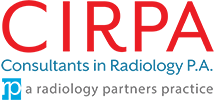RESOURCES
Our goal with this section is to help increase understanding and demystify this all-important realm of patient care. For those of you who find the field of Radiology as fascinating as we do, we have assembled a collection of resources and links to some enlightening articles on the subject. Knowledge is power. We hope you feel empowered when it comes to your own healthcare as you read and learn more about this field of medicine that for 40 years now has enabled CIRPA to turn images into answers for countless patients and their families.
Articles
Procedure Resources
Society of Computed Body Tomography & Magnetic Resonance
P.O. Box 1026
Rochester, MN 55903-1026
Phone: (507) 288-5620
Fax: (507) 288-0014
www.scbtmr.org
Society of Radiologists in Ultrasound
44211 Slatestone Court
Leesburg, VA 20176-5109
Phone: (703) 858-9210
Fax: (703) 729-4839
E-mail: info@sru.org
www.sru.org
Society of Breast Imaging
1891 Preston White Drive, Reston, VA 20191
E-mail: sbi@acr.org
www.sbi-online.org
The Society for Pediatric Radiology (SPR)
4550 Post Oak Place, Suite 342
Houston, TX 77027
Phone: (713) 965-0566
Fax: (713) 960-0488
E-mail: spr@meetingmanagers.com
www.pedrad.org
Society of Nuclear Medicine
1850 Samuel Morse Drive
Reston, VA 20190
Phone: (703) 708-9000
Fax: (703) 708-9020
www.snm.org
Society of Interventional Radiology
10201 Lee Highway, Suite 500
Fairfax, Virginia 22030
Phone: (800) 488-7284 or (703) 691-1805
Fax (703) 691-1855
www.sirweb.org
American Society for Radiation Oncology (ASTRO)
12500 Fair Lakes Circle, Suite 375
Fairfax, VA 22033-3882
Phone: (703) 502-1550 or (toll-free) (800) 962-7876
Fax: (703) 502-7852
www.astro.org
Radiology Innovators
For details on the above three innovators, simply Google their names, or for brief histories, visit www.nobel-winners.com.
Key Dates in Radiology History
1895 – Rontgen discovers x-rays.
1896 – Becquerel discovers radioactivity.
1901 – Rontgen receives the Nobel Prize in Physics for the discovery of x-rays.
1905 – The first English book on Chest Radiography is published.
1918 – Eastman introduces radiographic film.
1920 – The Society of Radiographers is formed.
1934 – Joliot and Curie discover artificial radionuclides.
1937 – The first clinical use of artificial radioactivity is done at the University of California – Berkeley.
1946 – Nuclear medicine is discovered by accident.
1950s – Wide-spread clinical use of nuclear medicine starts.
1950s – Development of the image intensifier and X-ray television.
1956 – The medical use of Ultrasound starts in Poland.
1962 – Kuhl introduces emission reconstruction tomography. This method later becomes known as SPECT and PET.
1967 – The first clinical use of MRI takes place in England.
